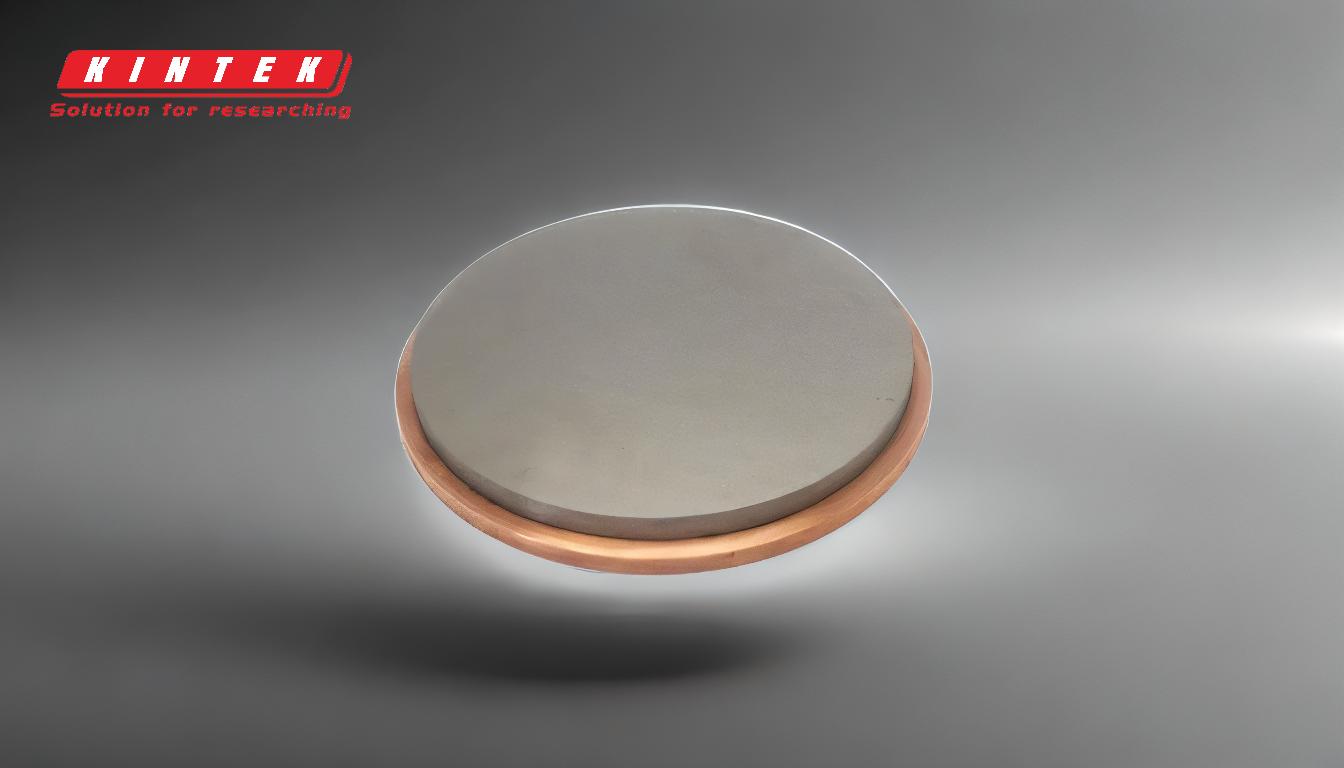To clean a sputtering target effectively, you must combine a meticulous ex-situ (out-of-chamber) preparation with a mandatory in-situ (in-chamber) pre-sputtering cycle. The most common and essential methods involve wiping the target with high-purity solvents like isopropyl alcohol and acetone for external cleaning, followed by a crucial "burn-in" sputter process with a shutter closed to remove the surface oxide layer immediately before deposition.
The true goal is not just a clean target, but a stable and repeatable deposition process. The single most critical step for achieving this is a consistent in-situ pre-sputtering or "burn-in," which removes the inevitable surface contamination that forms the moment a target is exposed to air.
The Two Arenas of Target Cleaning: In-Situ vs. Ex-Situ
Understanding where and when to clean a target is fundamental. The process is divided into two distinct environments, each serving a different purpose.
In-Situ Cleaning (Pre-Sputtering): The Non-Negotiable Step
This is the cleaning that happens inside the vacuum chamber right before you deposit your film. It is a mandatory part of nearly every sputtering process.
The technique involves igniting the plasma and sputtering the target material onto a movable shutter that protects your substrate. This "burn-in" period removes the thin, contaminated surface layer—primarily oxides and adsorbed gases—that forms on any material exposed to even trace amounts of air.
This step ensures that only pure target material reaches your substrate, leading to process stability and higher quality films.
Ex-Situ Cleaning: For Installation and Severe Contamination
This is the physical cleaning that happens outside the vacuum chamber, typically before a new target is installed or when troubleshooting a severe contamination problem.
Ex-situ cleaning is not a routine daily task. It is a preparatory or corrective action designed to remove heavy contamination like oils, fingerprints, or thick oxide layers that cannot be efficiently removed by pre-sputtering alone.
A Practical Guide to Ex-Situ Cleaning
When you need to physically clean a target, follow a deliberate, methodical process, always moving from the least aggressive to the most aggressive method required.
Step 1: Handling and Safety First
The foundation of a clean process is preventing contamination in the first place.
Always handle sputtering targets with clean, powder-free nitrile or vinyl gloves. Skin oils are a significant source of organic contamination that can ruin a deposition process.
Step 2: Solvent Wiping for Light Contamination
For new targets or those with light surface contamination, solvent wiping is the standard procedure.
Use high-purity (99%+) isopropyl alcohol (IPA) or acetone on a lint-free wipe. Gently wipe the target surface from the center outwards in a single direction to move contaminants off the edge, rather than smearing them around. Never reuse a wipe.
Step 3: Mechanical Cleaning for Heavy Buildup
This is an aggressive, corrective action reserved for targets with heavy oxidation, arcing damage, or process buildup that solvents cannot remove.
Methods include glass bead blasting or even re-surfacing on a lathe. This should be considered a last resort, as it fundamentally alters the target's surface texture and can embed cleaning media into the material if not performed correctly.
Understanding the Trade-offs and Common Pitfalls
An improper cleaning strategy can create more problems than it solves. Understanding the risks is crucial for maintaining a reliable process.
The Risk of Over-Cleaning
Aggressive mechanical cleaning can change the sputtering yield and uniformity of the target. The altered surface morphology can lead to inconsistent film properties until the target "conditions" itself over several runs.
Chemical Incompatibility
Never assume a solvent or acid is safe for your target material. Reactive metals can be damaged by certain chemicals. Using acids like hydrochloric (HCl) for cleaning requires deep material knowledge and is a specialized process that can be dangerous if performed incorrectly.
Ignoring Target Handling Protocols
The most common source of contamination is human error. A single fingerprint can introduce enough carbon to cause defects or adhesion failure in a sensitive process. Strict glove and handling protocols are more effective than any reactive cleaning procedure.
How to Choose Your Cleaning Strategy
Your approach should be dictated by your specific situation and the goals of your deposition process.
- If your primary focus is routine process stability: Master your in-situ pre-sputtering. Use a fixed time and power for your burn-in to ensure every run starts from an identical surface condition.
- If you are installing a brand-new target: Perform a thorough ex-situ solvent wipe before installation, followed by a longer-than-usual initial burn-in to fully condition the new surface.
- If you are seeing film contamination or process arcing: Start by inspecting the target for visible contamination. If present, perform an ex-situ solvent clean and then reassess the process.
A consistent and well-documented cleaning protocol is the foundation of high-quality, repeatable thin-film deposition.
Summary Table:
| Cleaning Method | Environment | Purpose | Key Action |
|---|---|---|---|
| Ex-Situ Cleaning | Outside Vacuum Chamber | Remove heavy contamination (oils, fingerprints) | Wipe with high-purity solvents (IPA, acetone) |
| In-Situ Cleaning (Pre-Sputtering) | Inside Vacuum Chamber | Remove surface oxides and adsorbed gases | Sputter target with shutter closed before deposition |
Achieve Flawless Thin-Film Deposition with KINTEK
Struggling with film contamination or process instability? Your sputtering target cleaning protocol is the foundation of success. KINTEK specializes in providing high-purity sputtering targets and the expert guidance needed to maintain them.
We serve laboratories and research facilities by ensuring their deposition processes are reliable and repeatable. Our products and support help you:
- Eliminate Contamination: Start with pristine targets and maintain them correctly.
- Maximize Process Uptime: Implement effective cleaning strategies to reduce troubleshooting.
- Improve Film Quality: Achieve the pure, consistent films your research demands.
Let our expertise in lab equipment and consumables enhance your results. Contact KINTEK today to discuss your specific needs and ensure your sputtering process is optimized for success.



